


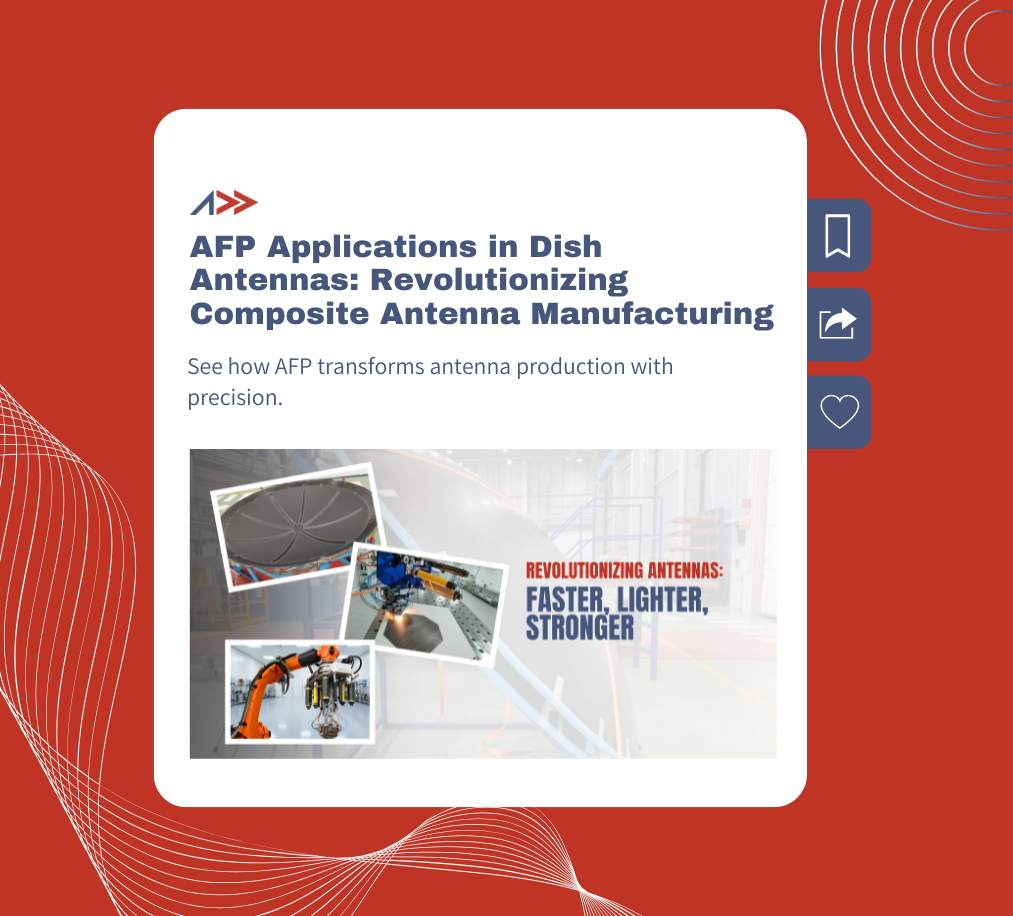


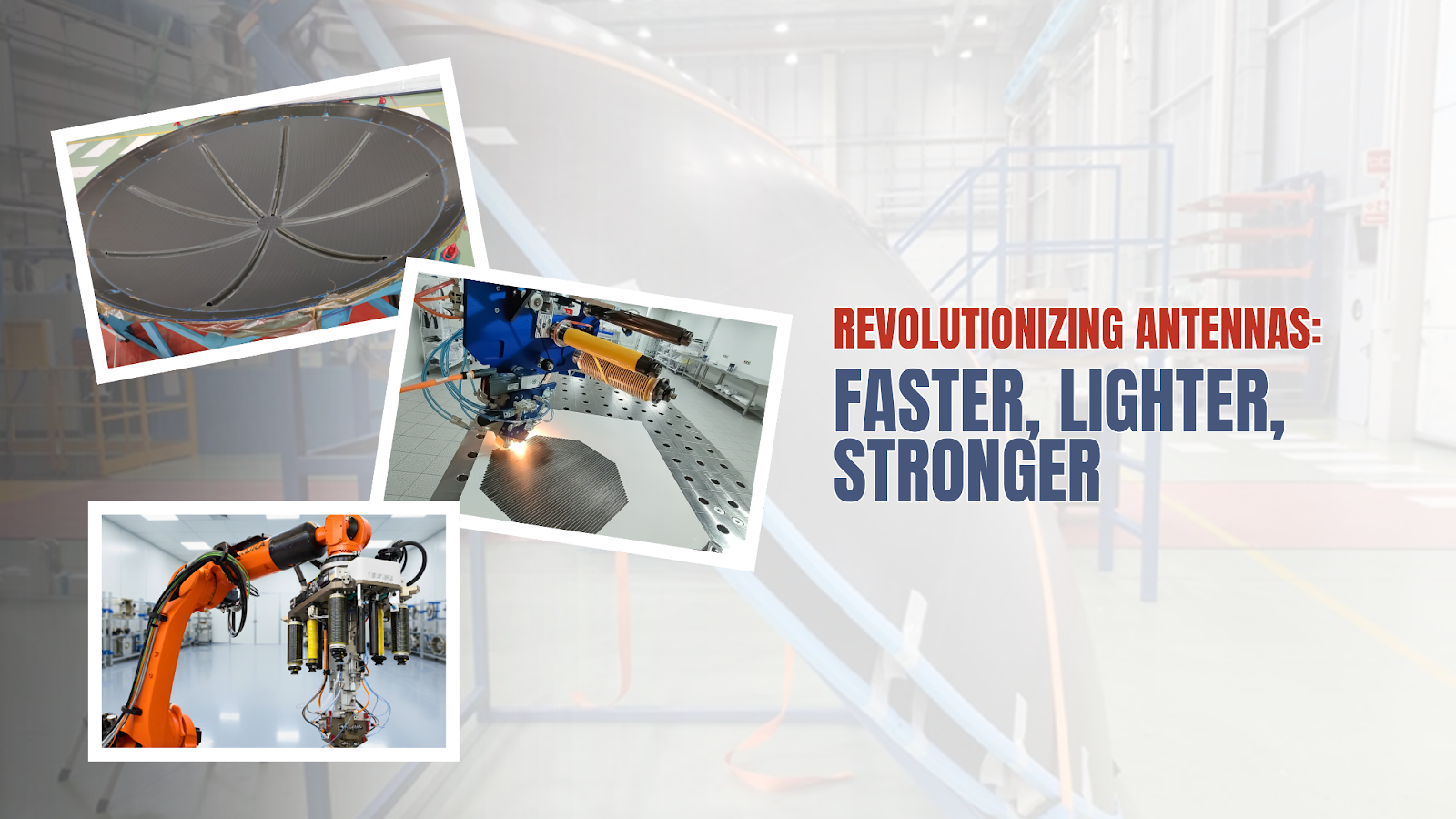
In the rapidly evolving world of satellite communications, radio astronomy, and wireless technologies, dish antennas play a critical role in enabling reliable signal transmission and reception. As performance requirements become increasingly stringent and applications more diverse, traditional manufacturing methods are being challenged by innovative composite manufacturing technologies. Automated Fiber Placement (AFP) has emerged as a game-changing solution for producing high-performance dish antennas with unprecedented precision, efficiency, and reliability.
As someone deeply involved in advancing composite manufacturing technology at Addcomposites, I've witnessed firsthand how AFP is transforming the dish antenna manufacturing landscape. In this article, I'll share key technical insights into how AFP technology addresses the unique challenges of antenna production and opens new possibilities for next-generation applications.
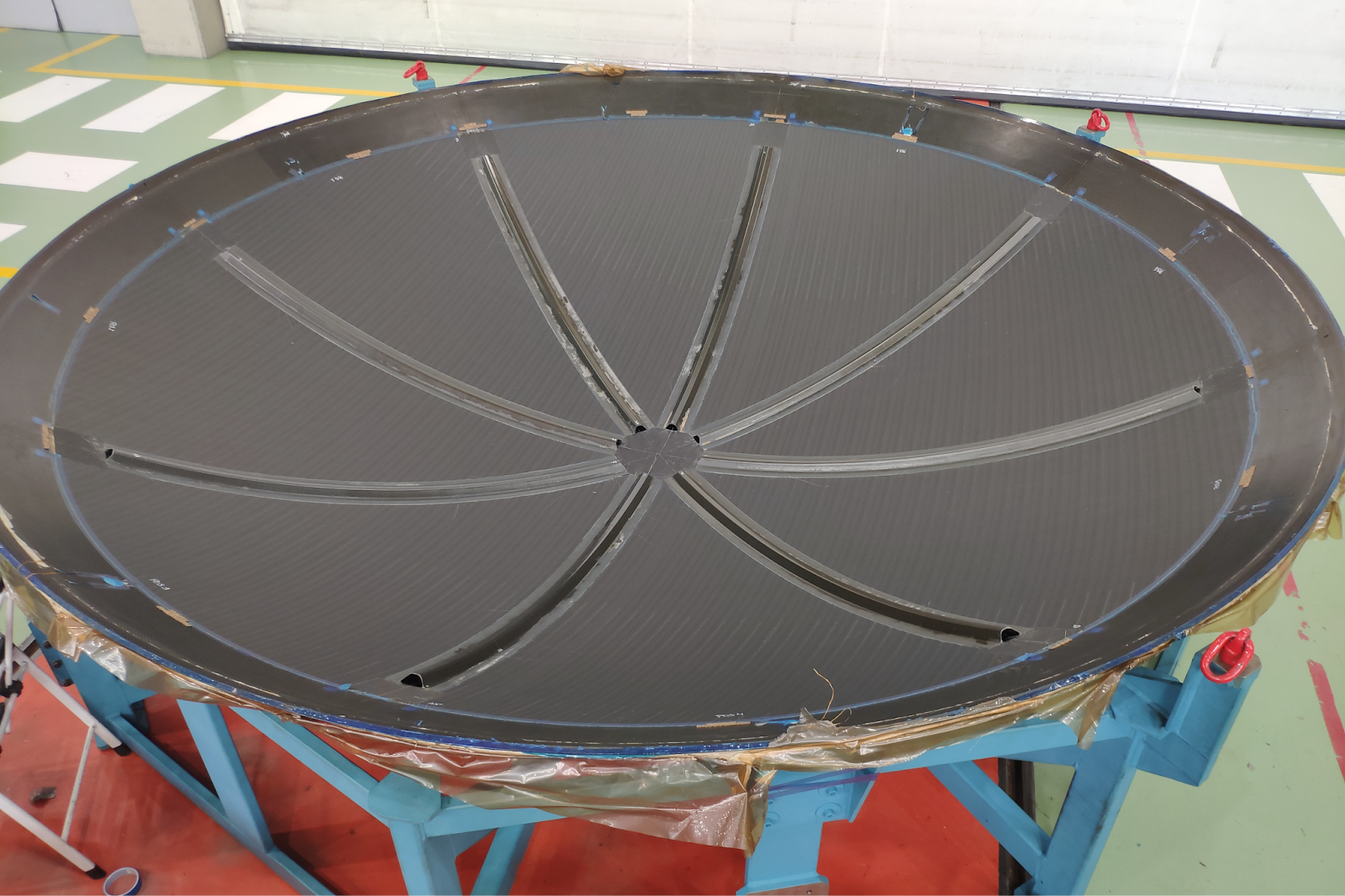
The foundation of any high-performance dish antenna lies in its geometric precision and material properties. Contrary to popular belief, dish antennas aren't always parabolic—different frequency bands require different antenna shapes, some of which can be quite complex. The key requirements for optimal RF signal quality and gain come from two fundamental aspects: surface geometry accuracy (measured using RMS - Root Mean Square value) and precise positioning of the receiver above the dish antenna.
AFP technology offers significant advantages in achieving these requirements. By using much narrower tapes, AFP enables excellent draping of fibers to complex double-curvature geometries. The critical factor is accounting for spring-back action that occurs due to metal tooling shrinkage during curing. When this is properly calculated, the result is a high-quality dish antenna with excellent RMS values. The digitization inherent in AFP systems provides another crucial advantage: RMS calculations are available immediately from tooling through the AFP process, and digital tooling enables precise transfer of alignment references for accurate receiver positioning.
Material selection for AFP-manufactured dish antennas requires balancing multiple technical requirements including electromagnetic transparency, structural rigidity, thermal stability, and environmental durability. For applications requiring stiffness, sandwich structures are the preferred solution, typically incorporating honeycomb or Nomex cores. The choice of skin materials depends on RF transparency requirements:
This flexibility allows engineers to strategically use carbon for non-transparent structural areas while employing glass or Kevlar where RF transparency is required. Environmental conditions drive material selection significantly—satellite-mounted antennas experiencing extreme temperature variations (+80°C to -180°C) require thermal stability, while shore-based antennas on ships need superior resistance to humidity and environmental exposure.

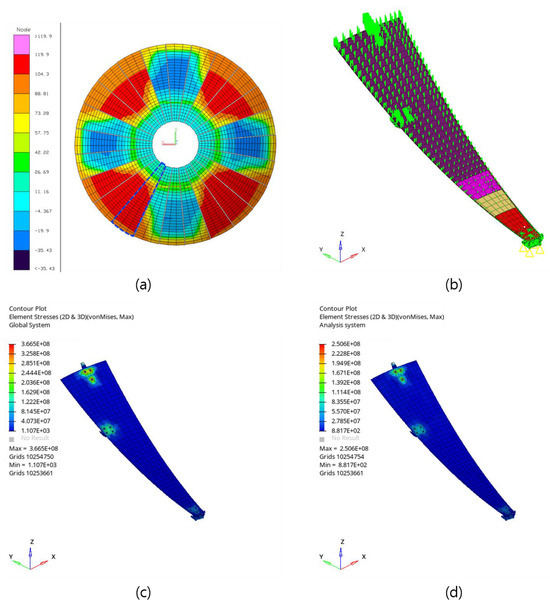
Temperature variations significantly affect antenna performance, making Coefficient of Thermal Expansion (CTE) management critical. This is particularly important for space applications where components experience extreme temperature swings in thermo-vacuum environments.
AFP enables precise control over CTE through strategic fiber placement. There exists a "magic layer orientation" that can achieve zero coefficient of thermal expansion—a capability that requires precise angular placement (such as 53.09°) virtually impossible to achieve consistently with hand layup. AFP's robotic precision handles any fiber orientation effortlessly, while human operators typically work only with 0°, 90°, and ±45° angles.
Beyond CTE, hygroscopic expansion poses another challenge. Moisture absorption causes structural changes, particularly problematic when transitioning from normal atmosphere (50-60% humidity) to the vacuum of space. The solution involves applying protective coatings—metallic or specialized hygroscopically preventive films—to maintain structural stability across varying environmental conditions.
AFP's fiber steering capabilities enable structural optimization that balances wind loading resistance, self-weight support, and minimal RF interference. While composite structures inherently provide minimal self-weight, the mounting systems require careful design. Ribs of different sizes and patterns integrated into the antenna's backside represent the optimal approach, either integrated directly through gridded patterns or bonded as sandwich structures.
AFP technology also seamlessly enables hybrid reflector designs that integrate structural elements with RF transparent sections. Engineers can use RF transparent materials (glass or Kevlar) for signal transmission areas while placing reflective strips (typically copper) where signal collection is needed—all executed within the same AFP system. For areas requiring different reinforcement densities, such as mounting hardware attachment points, AFP's selective fiber placement capability allows engineers to plan additional patch reinforcement precisely where loads transfer.
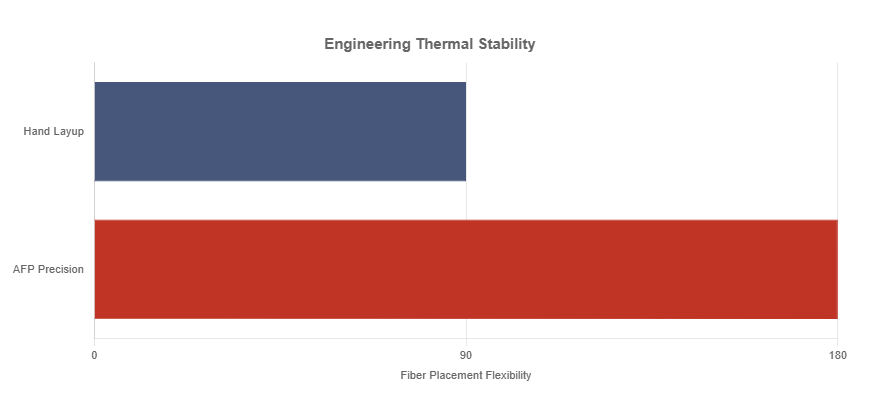
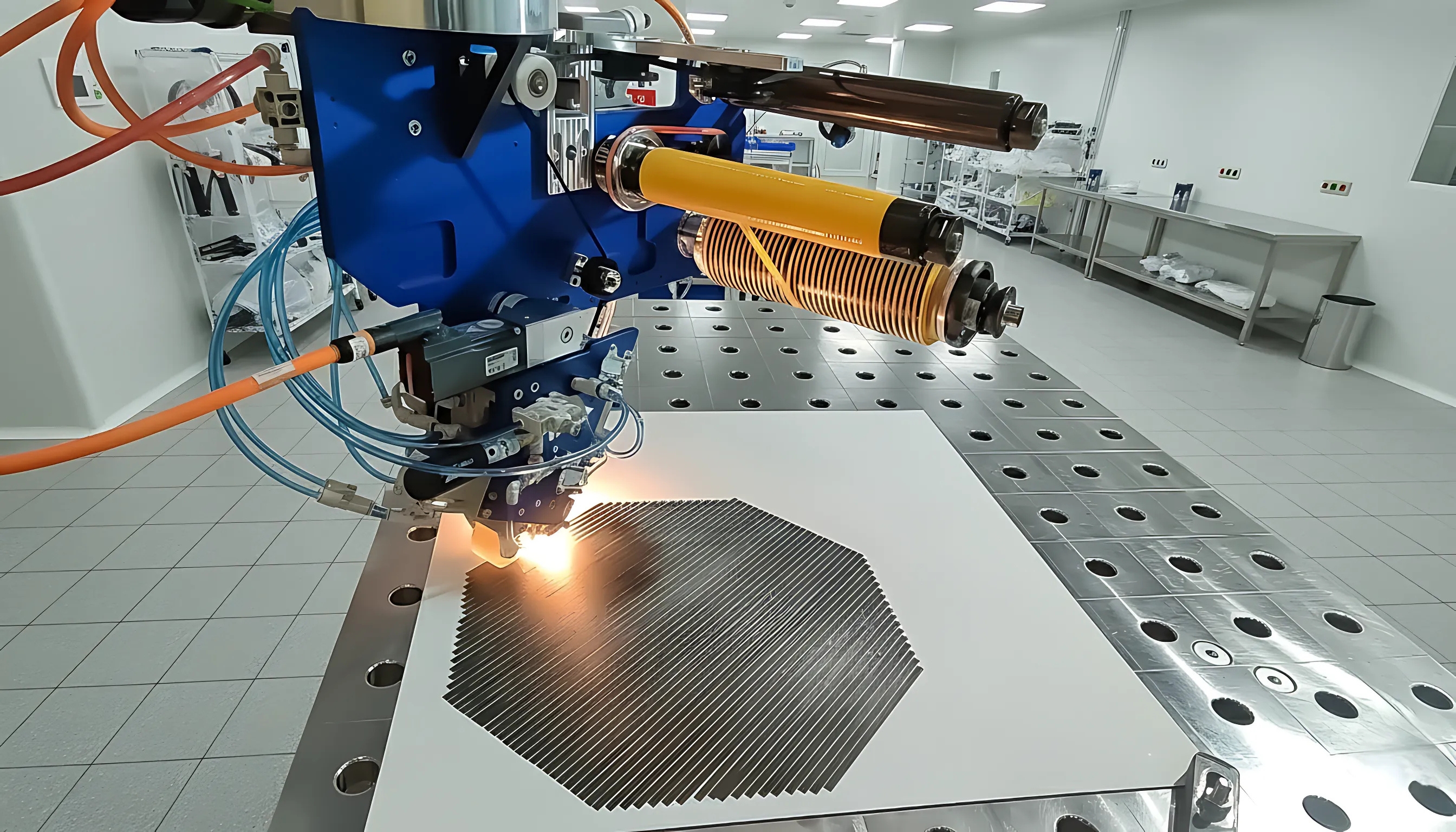
Dish antennas demand extremely tight surface tolerances—often sub-millimeter accuracy—for optimal RF performance. AFP's advantage becomes clear when comparing traditional versus automated approaches:
Traditional Process:
AFP Automated Approach:
The transformative advantage is faster design-to-realization cycles with better accuracy, higher repeatability, and enhanced process stability. Most importantly, quality issues are identified immediately rather than months into the process, enabling rapid iteration and improvement.
Consistent RF performance across multiple antenna units demands rigorous quality control. AFP systems from Addcomposites achieve this through real-time feedback and inspection. The AFP-XS and AFP-X systems incorporate laser line scanner sensors that scan surfaces in real-time during layup, detect gaps, overlaps, and other defects, and send data to AddPath software for analysis.
Given the double-curved nature of antenna surfaces, gaps and overlaps pose particular challenges—with overlaps being strictly prohibited. The system utilizes machine learning algorithms to identify issues and map defects in 3D GUI for operator review. Consecutive layer placement proceeds only after confirming all tolerances are met, delivering highly repeatable, high-quality placement that traditional methods cannot match.
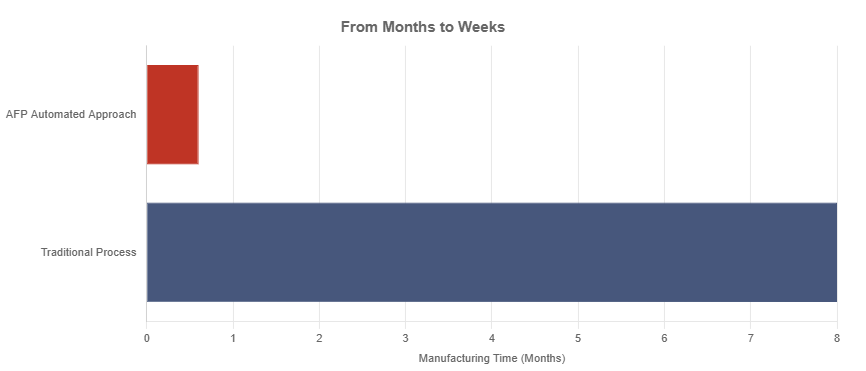
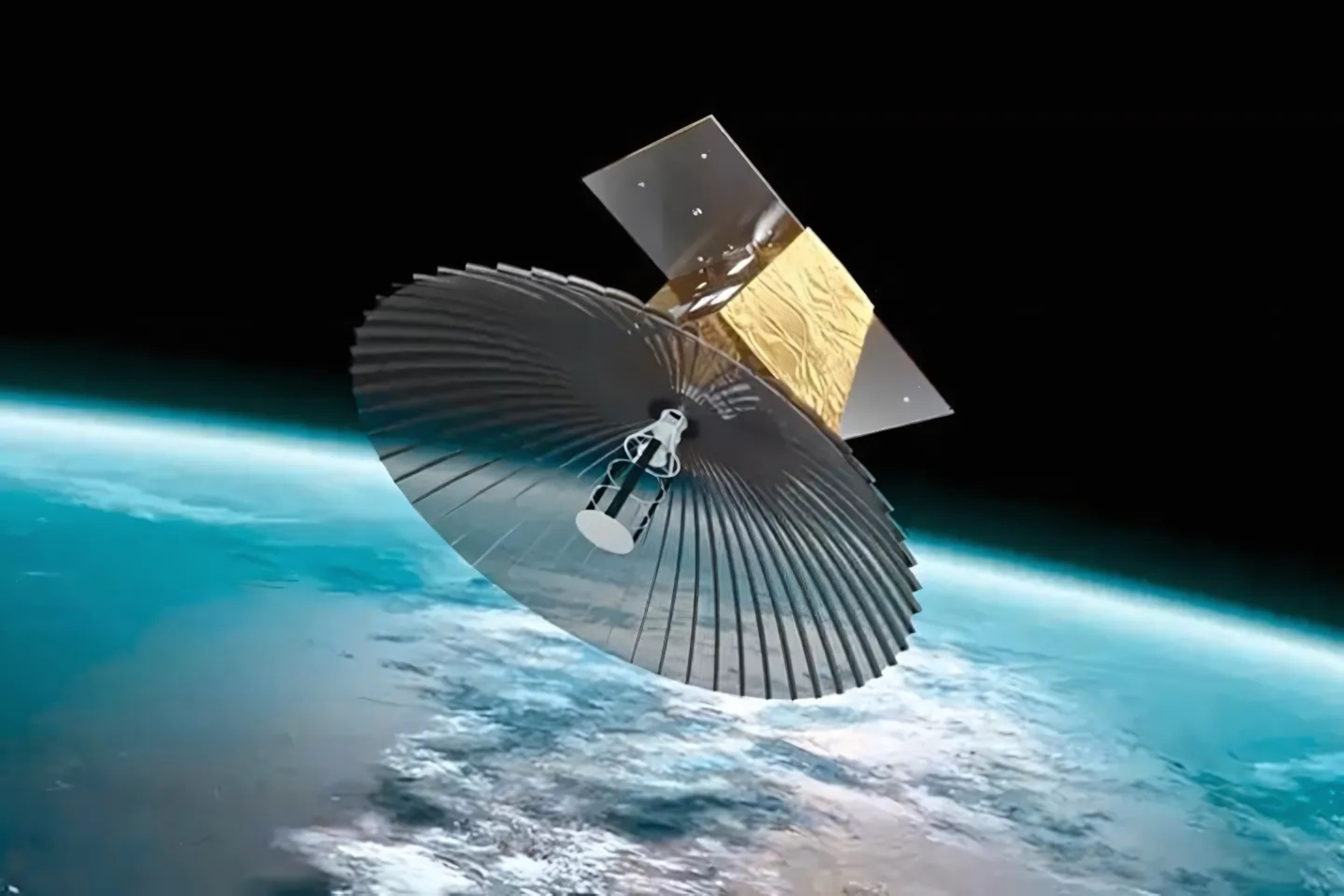
Scaling from small consumer dishes to massive ground station antennas presents unique challenges that AFP technology addresses with remarkable efficiency. For antennas ranging from 1-meter class to 5-meter class and beyond, the key lies in segmented assembly.
Rather than attempting single-piece construction, large antennas are manufactured as pizza-style segments or as a central dish with pie-shaped peripheral sections. Individual segments of 2-3 meters (AFP's optimal length capacity) are produced with high precision, then assembled using metrology tools like laser trackers or coordinate measuring machines to ensure proper alignment and surface accuracy.
AFP delivers the high repeatability necessary for this approach. Using consistent materials and maintaining uniform stiffness levels, manufacturers can create precise segments that assemble into very large antenna structures without concerns about differential CTE or alignment issues.
The advantages of AFP-manufactured composite antennas over traditional metal dishes are substantial and well-documented:
AFP's ability to optimize designs for the manufacturing process delivers advantages even over hand layup composites. The majority of loads on antennas come from vibrations, which are proportional to mass. With mass reduced by approximately 20 times, the structural loads decrease proportionally, dramatically reducing failure risk. For dish antenna applications, metal construction simply cannot compete with the weight, performance, and reliability advantages of AFP-manufactured composites.
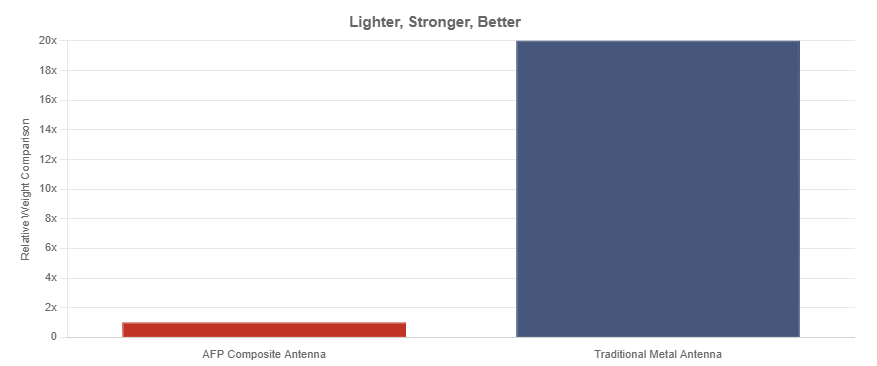
The antenna industry is evolving rapidly, and AFP technology is advancing to meet emerging demands. With satellite deployment increasing approximately tenfold in recent years, the need for efficient, high-quality antenna production has exploded dramatically.
Phased array systems utilize numerous smaller antennas working in coordination to cater to different communication needs. These applications require much smaller AFP systems capable of manufacturing smaller components with the same quality standards as larger antennas. The challenge lies in maintaining precision and quality while scaling down component size and increasing production volume.
Next-generation antennas must handle not only RF signals but also laser communications and other emerging technologies. These advanced requirements demand antennas manufactured in smaller, more efficient packages with unprecedented precision.
Responding to these evolving needs, Addcomposites is launching the AFP Light version—a more compact iteration of the AFP-XS system designed specifically for high-volume production of smaller components. This innovative system offers:
The AFP Light represents the next evolution in automated fiber placement, enabling manufacturers to compete effectively in the rapidly expanding market for advanced antenna systems.
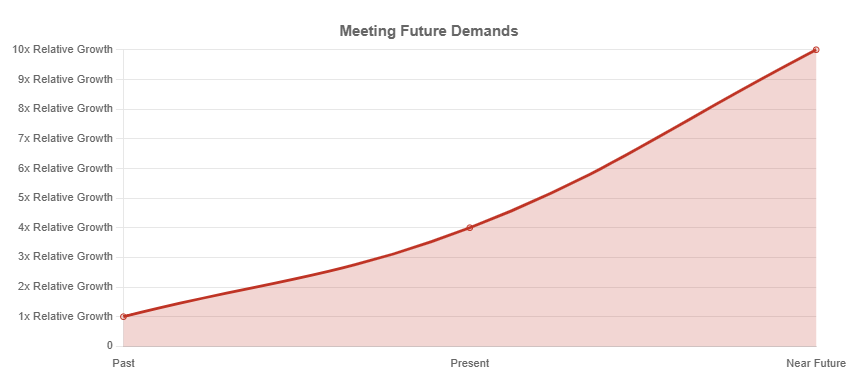
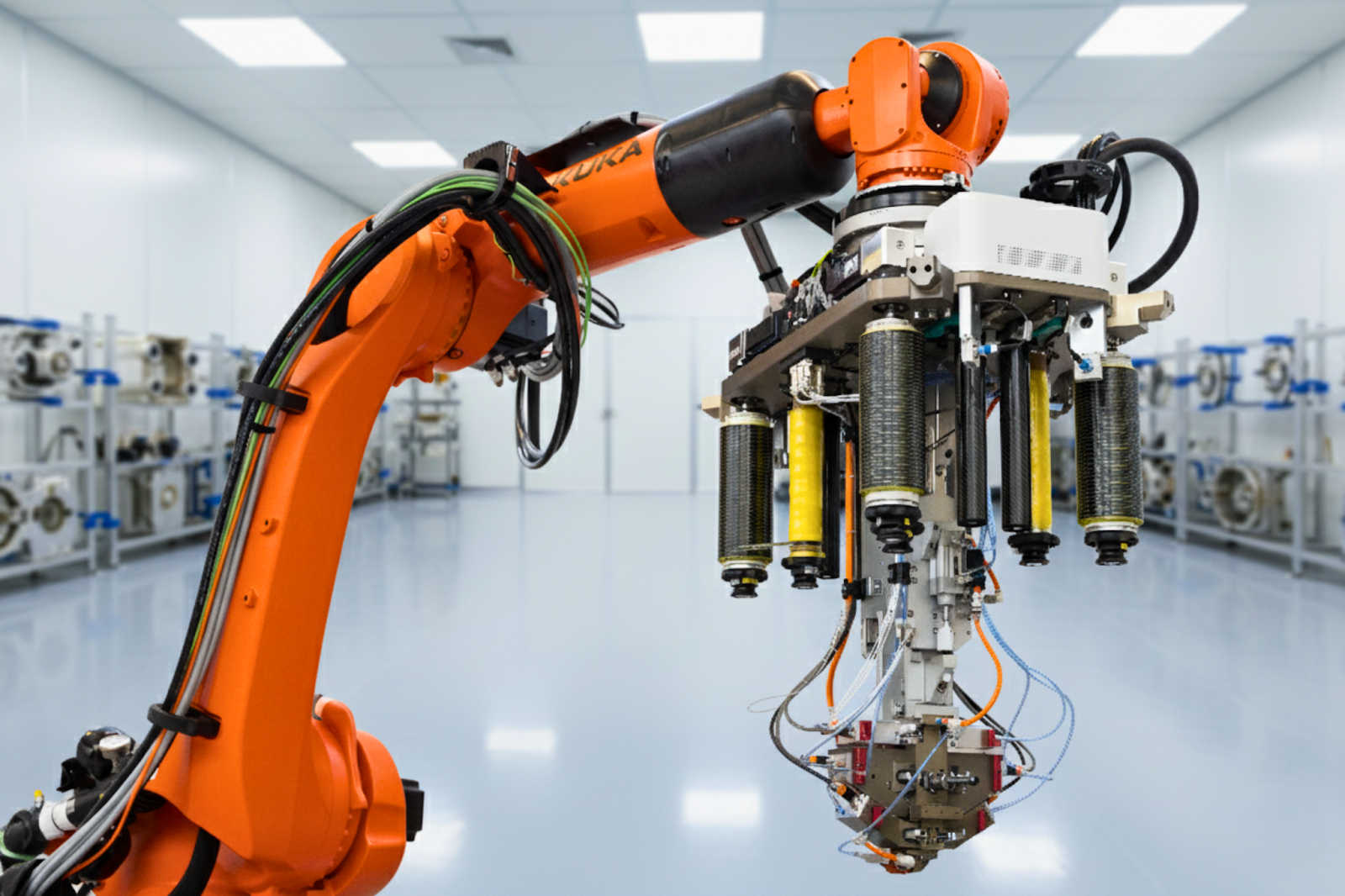
AFP technology represents a fundamental shift in dish antenna manufacturing, delivering unprecedented precision, efficiency, and performance. As the industry evolves toward phased arrays, deployable space systems, and multi-signal communications, we at Addcomposites offer comprehensive solutions tailored to your antenna manufacturing needs.
✓ Speed: 2-2.5 week design-to-production cycles vs. 7-9 months traditional
✓ Precision: Sub-millimeter surface accuracy for optimal RF performance
✓ Quality: Real-time feedback and automated inspection systems
✓ Scalability: From consumer dishes to massive ground station antennas
Ready to revolutionize your antenna manufacturing?
I invite you to connect with us to explore how AFP technology can transform your production capabilities:
📧 Email: info@addcomposites.com
🌐 Web: www.addcomposites.com
📞 Schedule a consultation to discuss your specific requirements
The future of composite antenna production is automated—let's work together to lead the way.
Addcomposites – Advancing Composite Manufacturing Through Innovation